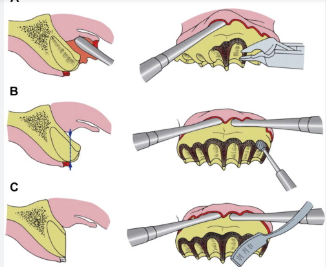Dental Code Alveoplasty: A Comprehensive Guide
1. Introduction to Alveoplasty
Alveoplasty is a surgical procedure performed in dentistry to reshape the alveolar ridge, the bony structure that holds the teeth in place. It is often done in preparation for dentures or dental implants to ensure a smooth, stable foundation.

2. What is Dental Code Alveoplasty?
Dental coding is essential for documentation and insurance claims. The Current Dental Terminology (CDT) codes assigned to alveoplasty help dentists and insurance providers categorize procedures correctly for reimbursement and record-keeping.
3. Importance of Alveoplasty in Dentistry
- Enhances the fit and comfort of dentures
- Prevents food impaction and irritation
- Facilitates proper healing after tooth extraction
- Improves aesthetics and function of the jaw
4. When is Alveoplasty Necessary?
Alveoplasty is required in cases such as:
- Before Dentures: Ensuring a well-shaped ridge for better fit
- After Multiple Extractions: Smoothing the bone to avoid sharp edges
- After Trauma or Surgery: Correcting bone irregularities for optimal healing
5. Alveoplasty Procedure: Step-by-Step
- Patient Assessment: X-rays and oral examination
- Anesthesia Administration: Local or general anesthesia
- Incision and Bone Reshaping: Using burs and bone files
- Suturing and Closure: Ensuring proper healing
- Postoperative Care Instructions
6. Dental Code for Alveoplasty: Understanding CDT Codes
| Code | Description |
|---|---|
| D7310 | Alveoplasty in conjunction with extractions (four or more teeth) |
| D7311 | Alveoplasty in conjunction with extractions (one to three teeth) |
| D7320 | Alveoplasty not associated with extractions (four or more teeth) |
| D7321 | Alveoplasty not associated with extractions (one to three teeth) |
7. Cost of Alveoplasty and Insurance Coverage
- The cost of alveoplasty varies between $300 – $2000 per quadrant.
- Most insurance providers cover alveoplasty if deemed medically necessary.
- Out-of-pocket expenses depend on policy coverage and location.
8. Preoperative Considerations
- Medical history evaluation
- Stopping certain medications (e.g., blood thinners)
- Preoperative imaging for treatment planning
9. Postoperative Care and Recovery
- Pain Management: Over-the-counter or prescribed medications
- Dietary Restrictions: Soft foods to prevent irritation
- Oral Hygiene: Gentle cleaning to avoid infection
- Follow-Up Visits: Monitoring healing progress
10. Potential Risks and Complications
- Bleeding and infection
- Delayed healing
- Nerve damage
- Bone resorption over time
11. Comparison of Alveoplasty with Other Dental Procedures
| Procedure | Purpose | Complexity |
| Alveoplasty | Bone reshaping | Moderate |
| Bone Grafting | Bone augmentation | High |
| Ridge Expansion | Widening the ridge | High |
| Socket Preservation | Preventing bone loss | Moderate |
12. Advancements in Alveoplasty Techniques
- Laser Alveoplasty: Minimally invasive, reduced bleeding
- Piezoelectric Surgery: Precision bone cutting
- 3D Imaging and Guided Surgery: Enhanced accuracy
13. Common Myths and Misconceptions
- “Alveoplasty is only for denture wearers” (False, also needed for implants)
- “The procedure is extremely painful” (False, anesthesia ensures comfort)
- “Healing takes months” (False, most heal within a few weeks)
14. Case Studies and Real-Life Examples
Case Study 1: Improving Denture Fit
- Patient: 68-year-old male
- Issue: Ill-fitting dentures due to irregular alveolar ridge
- Treatment: Alveoplasty performed before new denture fitting
- Outcome: Increased comfort and stability
Case Study 2: Post-Trauma Reconstruction
- Patient: 45-year-old female
- Issue: Jawbone irregularities after an accident
- Treatment: Alveoplasty and bone grafting
- Outcome: Restored jaw function and aesthetics
15. FAQs on Alveoplasty
1. How long does the procedure take?
Alveoplasty usually takes 30 minutes to 1 hour depending on complexity.
2. Is alveoplasty painful?
No, the procedure is performed under anesthesia, ensuring a painless experience.
3. How soon can I get dentures after alveoplasty?
Healing typically takes 4-6 weeks before denture placement.
4. Can alveoplasty be done with extractions?
Yes, it is commonly performed alongside multiple tooth extractions.
5. What are the signs of complications after alveoplasty?
- Persistent pain beyond a few days
- Swelling and infection
- Difficulty eating or speaking
16. Conclusion
Alveoplasty is a crucial dental procedure that enhances oral health by reshaping the jawbone. It is essential for denture stability, implant success, and overall aesthetics. Understanding the dental codes, costs, and recovery process ensures a smooth experience for patients.
17. Additional Resources
- American Dental Association (ADA) – www.ada.org
- National Institute of Dental and Craniofacial Research (NIDCR) – www.nidcr.nih.gov
- Journal of Oral and Maxillofacial Surgery – www.joms.org


